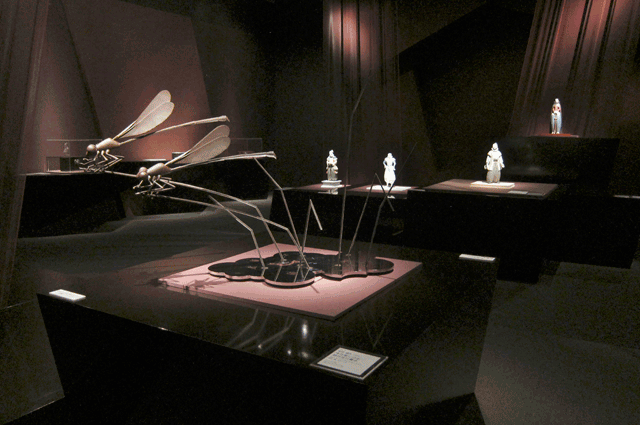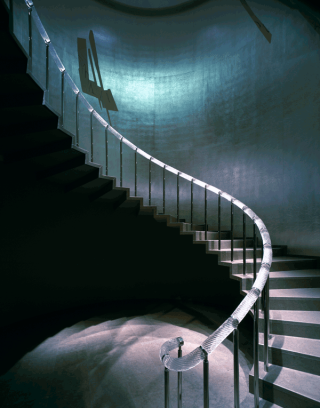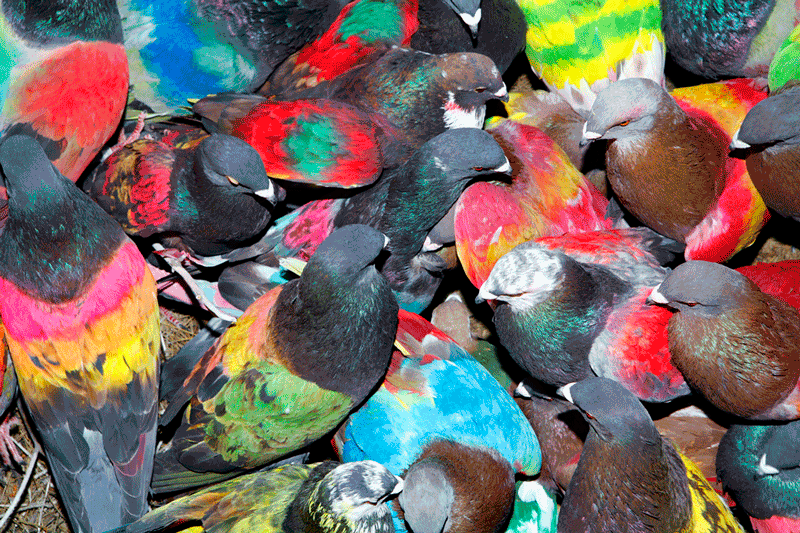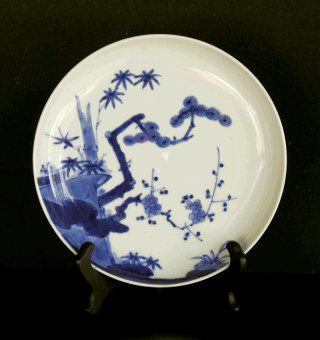From a bite-sized portrait of an artist’s life’s work, to an exhibition filled with art objects as useful as they are beautiful…from a gallery space that welcomes in the photographically-inclined, no matter how inexperienced, to the chance to bring affordable art into your own home and grow a collection: this month’s picks are all about immersing yourself in the art world. Don’t be timid; dive on in!
By Sarah Custen
The Kikuchi Kanjitsu Prize: Contemporary Japanese Crafts
Since their 2003 opening, Museé Tomo has endeavored to introduce contemporary ceramics to the Tokyo art scene with their Kikuchi Biennale competition, currently in its 6th iteration. This year, however, they’ve gone beyond that, with an exhibition featuring not only modern ceramics but also works of glass, wood, metal, bamboo, lacquer and textile by living Japanese artisans. The twelve artists, chosen by committee, represent the culmination of generations of artisanal knowledge. Two of the participants, Kenji Suda and Akira Yamamoto, have been nominated as Ningen Kokuho, Living National Treasures, for their innovative lacquer- and metal-work. Lacquer artist Yoshiaki Taguchi carries on the teachings of his father, a Ningen Kokuho, and Shinkyo Nakamura is a third generation maker of Hakata Ningyo, traditional Japanese clay dolls.
Heritage and ritual aside, these artists have elevated their forms beyond classical interpretations–Nakamura’s dolls incorporate a confluence of styles, showing the Spanish and Portuguese influence during the Edo period. Suiko Buseki drew inspiration from the
Sochi Winter Olympics for his bamboo vessels, and Noriko Tsuiki’s hand-woven obi and kimono feature such subtle gradations of delicate thread, cleverly straddling the line between two worlds as “wearable art.”
In fact many of the objects exhibited for the Kikuchi Kanjitsu are on loan from personal collections, where they may be used for their intended function, or simply admired for their exquisite forms. “In the modern age, craftsmen became artists,” said Museé Tomo’s Chief Curator, Mari Hanazato. “So the objects they made became art–pieces of their expression.”
This exhibition humbly offers up a small collection of crafts to the public, asking: Art? Object? Or something in between? “You can feel from the artworks their struggle on the edges between material, technique and expression,” Hanazato said. Your struggle will be resisting the overwhelming temptation to touch.
Musee Tomo
Dates: January 24–March 22, 2015
Open: 11:00–18:00, closed Mondays
Web: www.musee-tomo.or.jp/exhibition_english.html
Jules Pascin Retrospective
Tucked away on the fourth floor of the Panasonic Shiodome building in the downtown, business-district Shimbashi area, the Shiodome Museum is perfect for a little light art fare during your lunch break or an easy daytime date. Their current exhibition, a comprehensive retrospective of the international Modernist artist Jules Pascin, is short and sweet, in contrast to the long career and tumultuous personal life of the artist.
Jules Pascin packed a great deal into half a century: he lived and worked across Europe (most notably in France) and in the US, producing thousands of watercolors and sketches which sold well and garnered him critical acclaim. He had a social life so vivid and notable that Hemingway consecrated it in the pages of “A Moveable Feast.” He had many loves and many lives, including a personal struggle with alcoholism, depression and success which brought him to suicide on the eve of a prestigious solo show, at age 45.
This exhibition traces the artist’s career around the world and across the span of his short life and is the first full Pascin exhibition in Japan in 16 years. We see his intense growth and early success through numerous sketches from the post-Vienna years of fine art studies in Germany, followed by a burst of color and Fauvian influence during his pre-war years in Paris, then on to the US for avant-garde expression, Cuba for vibrant nature-inspired works, and then back to Paris, where years of different influences and experimental styles merge into his “mother-of-pearl period,” featuring bold oils with soft, shimmering colors and delicate, ephemeral lines.
“There is a high quality of expression with the mother of pearl color,” explained Toshiro Kurasawa, PR representative, “a color which can’t be reproduced by print.” See it in person, along with personal letters, books, and half-finished sketches from Pascin’s brilliant but half-finished life.
Shiodome Museum
January 17–March 29, 2015
Open 10:00–18:00, Fridays until 20:00, closed Wednesdays
panasonic.co.jp/es/museum/exhibition/15/150117/index_en.html
Photography Now, Vol. 2: Spanish New Horizon
IMA Concept Store is a bookstore/gallery/cafe that initially calls to mind the hip, artsy aesthetic of Urban Outfitters, but instead is a well-intentioned and well-informed—none of the irony or cooler-than-thou hipster attitude, but rather a comprehensive collection of contemporary photography books and experimental, expository expositions in a tranquil, thoughtful urban space.
“It’s been just one year since IMA opened,” said Nao Amino, editor of IMA Magazine, who describes IMA’s mission as “both exciting and challenging…as there had been no institution specializing in art photography with a global vision in Tokyo prior to IMA.”
Though they’re still working hard to gain recognition, Amino feels that IMA “offers a lot to cultivate the art and cultural scene in Tokyo.” This month’s offer: Spanish contemporary photography, currently hot in the global spotlight, including works by Ricardo Cases, a former documentary photographer who shifted towards art “so as to depict the Spanish culture with a sense of humor,” according to Amino. “Through the exhibition, we’d like to offer a glimpse into the vigorous Spanish photography scene, where many emerging talents have been forming active independent photo collectives to initiate a new era of photographic expressions.”
From March 20 to 22, visitors and photography fans can participate in a “Fotoziti” workshop, run by Cases himself, to make a collective fanzine representing three-days’ worth of collaborative work, a representation of participants’ unique styles, personalities and sense of place. The workshop is open to all ages and abilities, with simultaneous interpretation provided.
IMA Concept Store
Dates: March 13–April 26, 2015
Open: 11:00-22:00, most days
(check online for scheduling and special events)
Web: http://imaconceptstore.jp/
Imari Ware at the Tolman Collection
On a busy street in Tokyo, halfway between the ancient Zojo-ji Temple and the skyscraping Andaz Hotel at Toranomon Hills, you’ll find the Atago Shrine. Sitting atop its namesake hill, 26 meters above sea level, this was the highest point in early Tokyo, established in 1603, affording an citywide view meant to evade the destructive fires that plagued Tokyo at that time.
The Shrine is still active today, and across from it The Tolman Collection, as much a part of the city’s profile as any temple, shrine or skyscraper. Nestled in a charming, small building and packed with elegant Imari porcelain, The Tolman Collection serves as a window to the world of accessible art, a way to bring a piece of Japanese history and culture into your own home and life.
Many think of fine porcelain collectables as a gift for a special occasion–a wedding, a reminder of a friend’s visit to Japan long ago–but The Tolman Collection aims to be a part of the diverse and eclectic Japanese landscape, another part of this city’s many wonders, and a part of your ordinary life in Japan.
For a complete cultural experience, try visiting the Zojo-ji Temple, where you can see Toko Shinoda (Tolman’s premiere artist)’s largest work, a 28-meter mural titled “Past, Present, Future.” Then, wending your way north, you’ll pass the Zen Temple, Seisho-ji, before coming to Atago Shrine. Climb the shrine’s 87 steps for a picturesque Tokyo view, before continuing on to Toranomon Hills for a cup of tea and a different sort of view, 51 stories up in the sky at the Andaz Hotel. Going from Tokyo’s ancient views to a modern-day panorama, you can then, if you like, have a piece of that vast cultural past, a blue and white Imari, all for yourself, like the Sembikiya strawberries or melons that you normally would give only as gifts, except, just this once, when you indulge.
The Tolman Private Collection
Open: Wednesday–Sunday, 11:00–19:00
More information: 03-3434-1300
Web: http://www.tolmantokyo.com/












